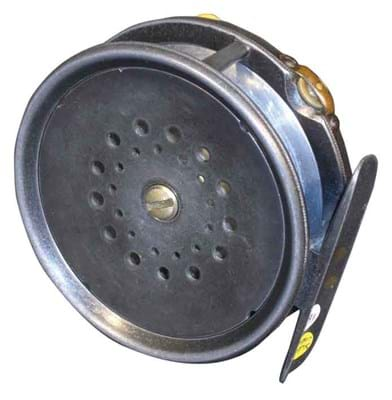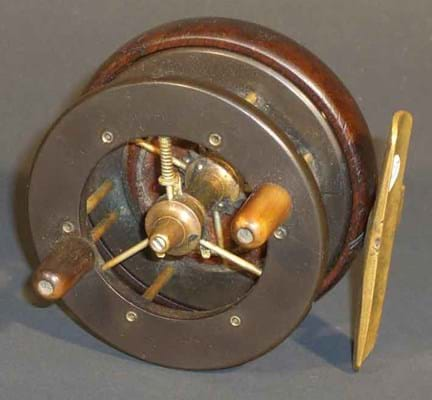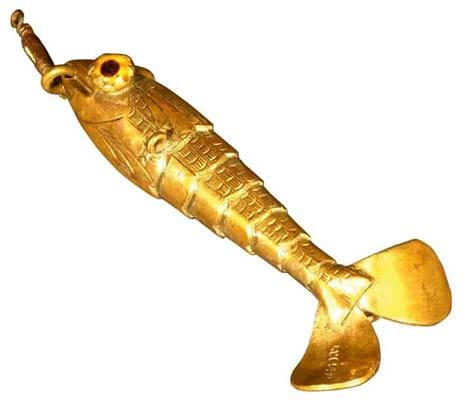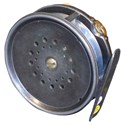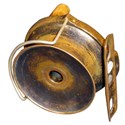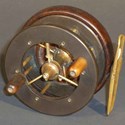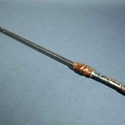For Cirencester auctioneers Moore Allen & Innocent (15% buyer's premium and the Assets Recovery Agency, at least, this was one that did not get away.
It was back in 2003 that Ian Duncan Mackenzie of Lympne, near Folkestone - who had served six months for the possession of two kilograms of cannabis with intent to supply but was cleared by a jury of more serious money-laundering offences - became the subject of a Civil Recovery investigation by the Assets Recovery Agency.
The ARA was then in its infancy, having been created in tandem with The Proceeds of Crime Act in 2002 and given powers to seize assets where there are reasonable grounds to suspect that there is taxable income, gain or profit from criminal conduct.
In settling the action against him in December last year, Mackenzie (who denied any involvement in crime) agreed that assets to the value of more than £800,000 would pass to the agency.
Alongside £559,000 in cash and shares to a value of £18,000, more than a quarter of that sum was accounted for by around 800 antique angling items.
Mackenzie, a keen fisherman and a knowledgeable historian of the sport, had collected for 20 years. Well liked and well known in what is a relatively small collecting community, he bought for cash the best that specialist auctioneers and dealers could muster.
The angling world had known for some time about the imminent break-up of the collection. Trade sources have outlined various attempts to buy the collection from the ARA privately and offers to sell it in a number of auctions over a couple of years.
Both strategies were designed to avoid what was the eventual outcome: a lastminute decision from the ARA that the collection should be hastily sold at public auction before the end of the financial year.
It was only on February 8 that Moore Allen & Innocent of Cirencester, who conduct regular sporting sales with small angling sections, were selected for the task on the understanding the ARA could expect a cheque by April 3.
The decision was controversial, and not because of the provenance. Specialist auctioneers and dealers, who had seemingly been overlooked by the ARA as potential agents, voiced their concern prior to the sale. Throw this volume of material on the market in a single day and anything could happen to price levels. Would the interests of the British taxpayer not be better served by selling via recognised specialists over a longer period?
The issue was heightened when the Cirencester sale coincidentally found itself up against specialist auctions in London and Ludlow.
But the consensus after last month's sales was that the antique fishing tackle market and its hundreds of well-heeled adherents will survive this glut relatively unscathed.
Credit must go to Moore Allen & Innocent. With the help of some late nights, the expertise of fishing consultant Bill Matthews and modest estimates that almost guaranteed a sell-out for their client, they succeeded in their aim of creating a brief but effective feeding frenzy around 836 lots.
Landmark Prices
There were few landmark prices in a gruelling nine-and-a-quarter hours of selling, but if dealers and collectors arrived in Cirencester hoping to buy the results of Mackenzie's 20-year collecting odyssey for next to nothing, they soon found they were not alone.
There were more than 100 others in the room and buyers from the US, Canada, Japan and Europe on the telephones. Mackenzie collected across the board, from lures to literature, but the reel is king and he had more than 400 of them.
An illustration of the depth of this collection was the presence of more than 30 all-brass Perfects. A 'first model' of Hardy's most famous creation would typically realise £6000-10,000 in good condition at auction, with rare variants selling higher still. (The reel sold by Angling Auctions for a record £17,000 in 1996 was once in Mackenzie's collection).
The example here had hands up everywhere at its £1500-£2000 estimate and settled at £6200.
The Perfect has been made in myriad variants and prototypes from 1890 until the present day. There were many rarities here including the transitional trout fly reel known as thePerfect 2(£4200); a Perfect Houghton fly reel with an early version of the calliper check (£3500) and a brassfacedPerfect 5alloy salmon reel fitted with a heavy duty calliper check mechanism (£3000).
There was some speculation before the sale that spending power might become seriously diluted by the end of the day. Instead one of the most impressive results was achieved as late as lot 783 for a Hardy Silent Perfect 3,3/8in (8.6cm) alloy trout fly reel. Visually it is unexceptional but the 'silent' mechanism makes it technically interesting and it was the first on the market for some time.
Estimated at between £200 and £300, it finally sold at £3600.
Coxon Aeriel
With the right people in the room to generate this kind of price it was surprising to see a poor result for an Allcock Coxon Aerial 2.5in (6cm) three- spoke centrepin reel. Some considered it the best reel in the sale and, almost unique, in a different rarity league to the £6100 Coxon Aerial silver-rimmed roller-back sold by Mullocks a couple of years ago. A five-figure sum was not out of the question. Instead it made £2600.
There is no doubt that Mackenzie, in his time a strong buyer at auction (particularly Angling Auctions), 'lost' some substantial sums on his purchases.
Lures
A glazed case of 48 lures was one of a number of Victorian trade displays sold as part of the collection of food writer Anissa Helou at Christie's in 1999. Most of those cases sold to buyers in the US at massive prices but Mackenzie had acquired this example, including baits by Allcock, Edkins and Gregory, for something close to £30,000.
In Cirencester competition was more muted and it sold for £8800, a sum that is probably less than its break-up value. The buyer was fishing tackle writer Graham Turner who is compiling a book on lures.
Some of the individual lures were deemed very good value but two sold at £1500 each. These were both by Gregory in engraved brass with glass eyes: one a fully marked Windsor Bee 2.25in (5.5cm), the other an unmarked but larger Cleopatra measuring 3.5in (9cm) long.
A strong bid of £2100 (estimate £150- 200) greeted a C. Farlow pigskin fly wallet containing approximately 150 gut-eyed flies, some line and a hook chart (the large size of the flies was its major selling point) while The Kelson, a fly-tier's compendium in an oak-lined box concealed in a leather travel case, by Bambridge of Eton-on- Thames, sold at £1900 (estimate £300- 400).
But, in a sale of this magnitude when it is impossible to view everything properly (and not everything was correctly described), there were also bargains. A Cooks Patent No. 5941 spring-loaded pincer gaff with turned rosewood handle and brass fittings sold for £620 (Mackenzie is believed to have paid many times that for it), while one of the cut-price discoveries in a mixed lot was a Hardy net made before 1881 in the very early years of the firm.
However, for the client it was the final figure that mattered and a total just shy of £300,000 was a boon for the Assets Recovery Agency for whom the sale was also a very visible reminder of the Proceeds of Crime Act at work.
And I understand that the ARA got their cheque two weeks early.

